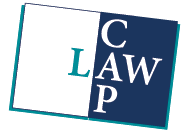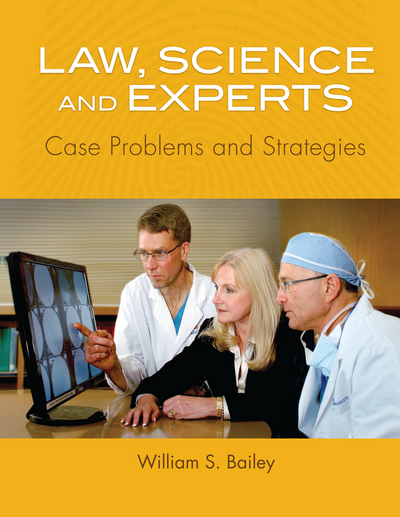Law, Science and Experts: Case Problems and Strategies
2018
Tags: Evidence; Science, Technology, and Law; and Trial Advocacy
Teacher's Manual available
348 pp $70.00
ISBN 978-1-5310-0302-9
eISBN 978-1-5310-1422-3
While expert witnesses and forensic evidence increasingly have taken a dominant role in both criminal and civil litigation, lawyers remain largely untrained in the scientific method. In 2009, the National Academy of Sciences was highly critical of the use and abuse of forensic evidence, noting the difficulty in determining its reliability. Combined with Law, Science and Experts: Criminal and Civil Forensics, this four-color book meets this challenge head-on, providing the complete experiential package and helping to transform the classroom. It contains eight criminal and civil case problems, offering students exciting, unparalleled learning opportunities.
Editorial Reviews
"Tucker Carrington, Director, George C. Cochran Innocence Project and Associate Dean for Clinical Programs at The University of Mississippi School of Law
"The practice of law cannot be learned in a classroom listening to law professors lecture. To learn to be a great lawyer students must practice! Wlliam S. Bailey's Law, Science, and Experts: Cases Problems and Strategies provides a basis for the practice students need.The book covers important and difficult topics such as deposing, directing, and crossing experts, critical tasks that many lawyers learn how to do at the cost of their first clients. Professor Bailey's book will allow students to learn these skills before their clients suffer. I congratulate Professor Bailey on this achievement. His books makes a great contribution to legal education. These types of books are critically needed if we are to serve society by training excellent practitioners of law." — Justin Brooks, Director, California Innocence Project
"Bailey's textbook fills a void that has long been a problem in practice—law students graduate into lawyers with enormous caseloads involving forensic science and are expected to be masters in these disciplines without any background in science. In almost no other field do students graduate with such a "generalist" degree, the J.D., and are expected to be experts in multiple other disciplines for which there are stand-alone degrees and programs. This book fills the gap and provides law students with a solid foundation to enter practice more prepared to handle the difficulties and complexities of scientific testimony and evidence." - Lauren McLane, Assistant Professor of Law, Faculty Director, the Defender Aid Clinic University of Wyoming, College of Law
"Law, Science, and Experts is a brilliant "how to" manual for handling expert witnesses. It masterfully covers direct, cross, and deposition techniques. What makes the book so captivating is its use of authentic problems from very interesting real cases to explain strategies and techniques. Everything is covered in this clearly and crisply written textbook including current evidentiary controversies. It is a must for every litigators library." — Shane Read, award-winning author of Turning Points at Trial and Winning at Deposition.
"Former trial lawyer and now law school professor, William S. Bailey, has authored a marvelously rich text and problem book designed to teach law students (or young associates) how to direct and cross-examine expert witnesses in eight fields of forensic science. Law, Science and Experts: Case Problems and Strategies, presents an immensely informative and understandable explanation of the scientific method and expertise as an overview before explaining the fields of forensic computer analysis, DNA analysis, economics in a death case, fingerprint analysis, forensic psychology in an insanity defense case, medical malpractice, vocational experts, and biomechanical analysis in a personal injury case. Each chapter details the strengths and weaknesses of expert opinions in that particular field, as well as how to best present and attack the expert's testimony. The chapter on each field of forensic science is followed by a related case problem. The case files are very realistic and come with the document and picture exhibits you would expect to find in a real case file. The book also contains material sufficient to assign students to argue a Daubert motion, and a detailed course syllabus." — Professor Frederick C. Moss (Emeritus)
"Scientific and statistical evidence is everywhere, from DNA samples at crime scenes to estimates of economic losses. Law students and practicing attorneys must grapple with it all and get juries and judges to see what it means. Law, Science and Experts shows you how, in a book that is a model of effective teaching." — Phillip Hoffman, Axline Professor of Business Economics and History, California Institute of Technology
"As a trial attorney and an advocacy teacher, I think this book is excellent work. It provides a incisive and thoughtful discussion of forensic science and the interplay between it and the advocacy process. I particularly enjoyed the detailed explanation of the value of the "soft" approach to cross examination of the expert set forth in the appendix. The book, and the accompanying Case Problems and Strategies, are a valuable resource for the beginning practitioner as well as the more experienced practitioner. For someone grappling with a substantive area of forensic science for the first time, the book teaches what it preaches–it provides a simple, easily digestible understanding of the basics of the science, which, of course, is essential to developing a strategy for direct and cross examination of the expert witness. For those who already have an understanding of the basics of the science, the book provides creative and thought provoking ideas and strategies to be considered." — Michael Johnson, Former US Department of Justice, Senior Litigation Counsel
"Criminal law instruction tends to be a mixture of high theory and low practice. The authors of this enormously valuable text have bridged the gap between the two by empowering students to investigate and litigate consequential cases complicated by advanced forensic evidence. Students must master the relevant technologies and disciplines, ranging from such familiar matters as fingerprint analysis to the higher-tech realms of DNA analysis and computer forensics to the intangible art of forensic psychology -- and beyond. Within each discipline the authors have crafted accessible instructional text and unusually realistic case materials, including investigative reports, witness statements, search warrant affidavits, crime scene photos, crime lab reports, hearing transcripts, and a wide array of forensic exhibits. Combining all these elements, this volume will prove a hugely useful teaching tool." — George Fisher, Judge John Crown Professor of Law, Stanford University Law School
Comp Copy If you are a professor teaching in this field you may request a complimentary copy.


